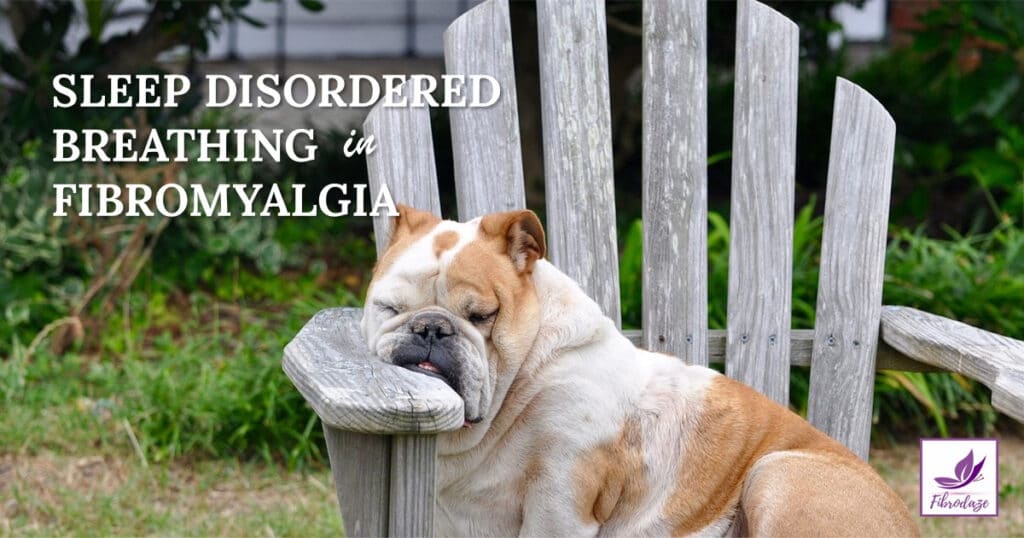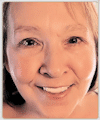Sleep-disordered breathing (SDB) is defined as obstructive breathing episodes occurring exclusively during sleep. It is common in people with fibromyalgia. SDB is characterized by repeated episodes of hypopnea (under-breathing) and apnea (not breathing) during sleep.

Hypopnea is when a person doesn’t stop breathing, but breathing becomes shallow for 10 seconds or more. Apnea is when a patient stops breathing for 10 seconds or more, and wakes up just enough to take a breath.
Sleep disordered breathing disrupts a person’s sleep pattern, night after night. This not only makes you tired and exhausted the next day, it may also put excessive strain on the nervous system and major organs.
Research suggests there is a link between sleep disordered breathing and fibromyalgia. According to this article, people with fibromyalgia have a tenfold increase in sleep-disordered breathing.
Types of Sleep Disordered Breathing
Sleep disordered breathing covers two conditions, Sleep Apnea and Upper Airway Resistance Syndrome (UARS). Both conditions are concerned with the passage of oxygen into the lungs.
- Sleep Apnea – Sleep apnea is a serious sleep disorder. When a person has sleep apnea they stop breathing while sleeping. Breathing pauses can last from a few seconds to minutes. They may occur 30 times or more an hour. Typically, normal breathing then starts again, sometimes with a loud snort or choking sound.
- Obstructive sleep apnea is the most common type of sleep apnea. In this condition, the airway collapses or becomes blocked during sleep. When you try to breathe, any air that squeezes past the blockage can cause loud snoring.
- Central sleep apnea is a less common type of sleep apnea. This disorder occurs if the area of your brain that controls your breathing doesn’t send the correct signals to your breathing muscles. As a result, you’ll make no effort to breathe for brief periods. Snoring typically doesn’t happen with central sleep apnea.
- Mixed sleep apnea is a combination of both Obstructive and Central sleep apnea.
- Upper Airway Resistance Syndrome is due to resistance to airflow in the upper airway. The term “resistance” refers to the fact that something is slowing or blocking air in the nasal passages. The most common causes are mild nasal congestion or tongue position during sleep that blocks breathing.
Symptoms of Sleep Disordered Breathing
- Sleepiness, tiredness, or exhaustion
- Loud snoring with frequent awakenings
- Waking up gasping and/or choking
- Feeling unrefreshed upon awakening
- Waking often during the night to urinate
- Morning headache
- Dry mouth in the morning
- Falling asleep while driving or at stoplights
Risk Factors For Sleep Apnea / Sleep Disordered Breathing
Sleep apnea can affect anyone at any age, even children. Risk factors for sleep apnea include:
- Being male
- Being overweight
- Being over age 40
- Having a large neck size (17 inches or greater in men and 16 inches or greater in women)
- Having large tonsils, a large tongue, or a small jaw bone
- Having a family history of sleep apnea
- Gastroesophageal reflux, or GERD
- Nasal obstruction due to a deviated septum, allergies, or sinus problems
People with sleep disordered breathing are at higher risk for car crashes, work-related accidents, and other medical problems. If left untreated, SDB can result in a growing number of health problems, including:
- High blood pressure
- Stroke
- Heart failure, irregular heart beats, and heart attacks
- Diabetes
- Depression
- Headaches
People with Fibromyalgia and SDB have added risk factors — prescription of sedative or narcotic agents, which can cause or worsen SDB. See your doctor right away if you suspect you have sleep apnea.
Pin for Later





